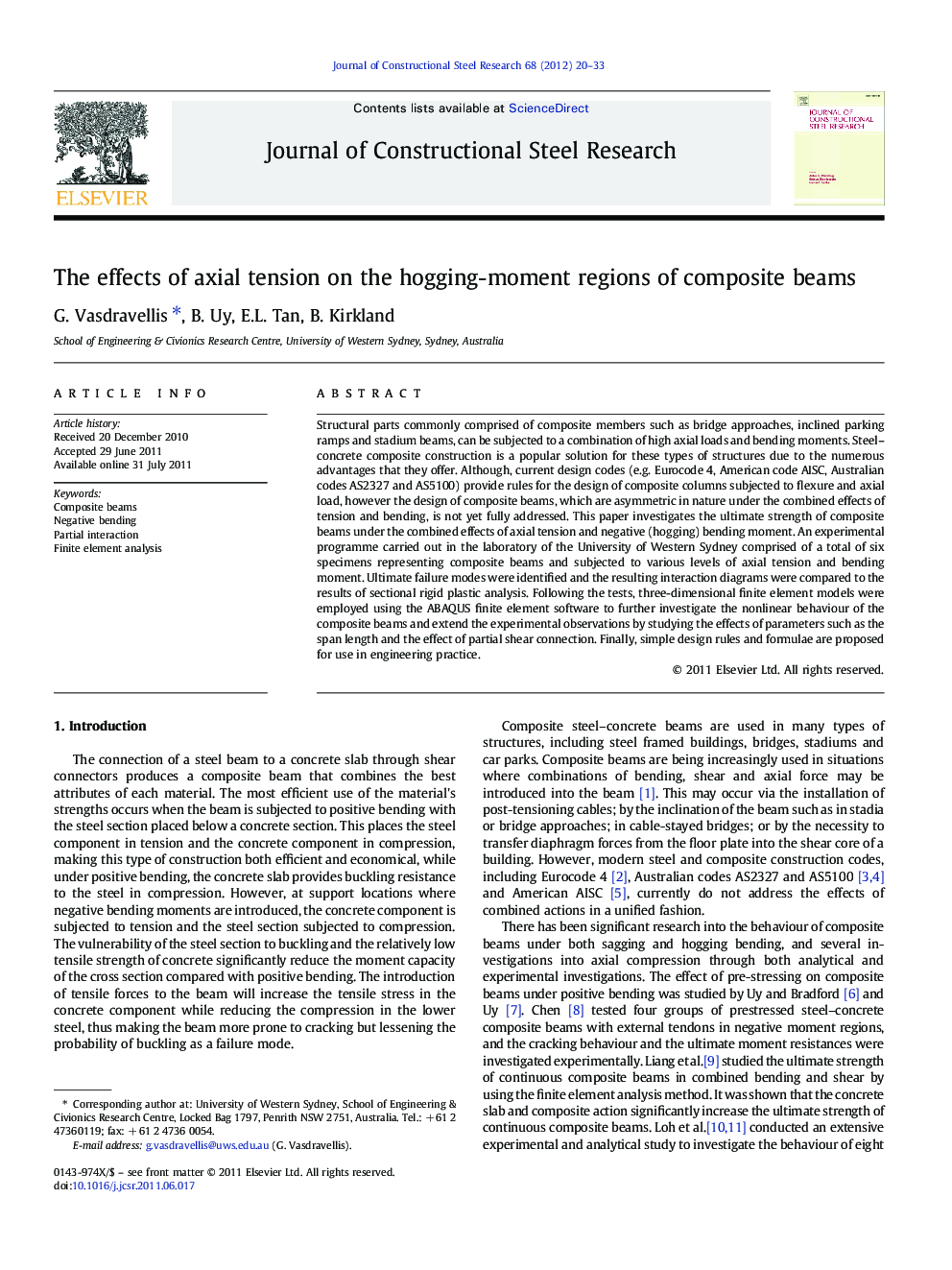| Article ID | Journal | Published Year | Pages | File Type |
|---|---|---|---|---|
| 285302 | Journal of Constructional Steel Research | 2012 | 14 Pages |
Structural parts commonly comprised of composite members such as bridge approaches, inclined parking ramps and stadium beams, can be subjected to a combination of high axial loads and bending moments. Steel–concrete composite construction is a popular solution for these types of structures due to the numerous advantages that they offer. Although, current design codes (e.g. Eurocode 4, American code AISC, Australian codes AS2327 and AS5100) provide rules for the design of composite columns subjected to flexure and axial load, however the design of composite beams, which are asymmetric in nature under the combined effects of tension and bending, is not yet fully addressed. This paper investigates the ultimate strength of composite beams under the combined effects of axial tension and negative (hogging) bending moment. An experimental programme carried out in the laboratory of the University of Western Sydney comprised of a total of six specimens representing composite beams and subjected to various levels of axial tension and bending moment. Ultimate failure modes were identified and the resulting interaction diagrams were compared to the results of sectional rigid plastic analysis. Following the tests, three-dimensional finite element models were employed using the ABAQUS finite element software to further investigate the nonlinear behaviour of the composite beams and extend the experimental observations by studying the effects of parameters such as the span length and the effect of partial shear connection. Finally, simple design rules and formulae are proposed for use in engineering practice.
► Negative bending – axial tension interaction diagram for composite beams. ► Finite element model captures accurately nonlinear composite beam behaviour. ► Parametric study investigates practical beam sizes and lengths. ► Partial shear connection can prevent or delay local buckling. ► Design models provide lower limit for negative moment-axial tension interaction.
